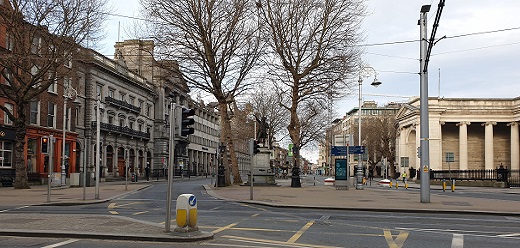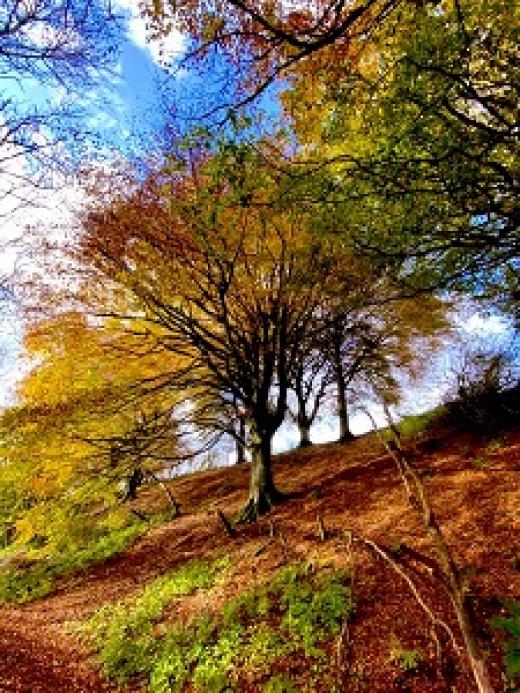
When Ireland first went into complete lockdown in March 2020, little did we know that we were facing a whole year of restrictions. It is quite sobering to look back at a year of the IHA’s Covid-19 blogs, starting with Ida Milne’s 25 February 2020 entry on pandemics who, in invoking Rosenberg, wondered if “a heedless society reverted to its accustomed ways of doing things as soon as the event passed?”. We are not, of course, there yet. Colm Kelly’s midyear reflection on the new ‘normal’ for musicians broadcasting from their houses spoke to the considerable shift in music making in order to simply survive. Thriving did not come into it. Towards the end of the year, Marrion McGarry’s post addressed the importance of Halloween rituals in the past but it was possible to think about it in current terms in the absence of newer trick or treat practices and the lost ability to simply go out with family and cross the thresholds of other houses in the community.
Here we are in 2021, with more knowledge, considerable tiredness, and no clear end in sight. So many industries related to the Arts have been hit very hard and artists continue to struggle to make ends meet as their capacity to create and share their creative work is severely restricted if not altogether gone in many cases. The turn to online events has not only sustained many artists, but surely most of us as our worlds shrink and we seek refuge in the Arts for comfort and inspiration.
In my own current research on music festivals, a number of large-scale events that I had hoped to study were cancelled for the remainder of the calendar year of 2020. Some festivals opted to offer hybrid events or to go exclusively online in adapted form. The organisers of the popular summer solstice festival, Body & Soul, a music and creative arts event held on a 17th-century Ballinlough estate an hour outside of Dublin, chose to enter into a fallow period, staying out of sight, and now facing similar conditions for 2021.
On Feb 13th, 2021, Body and Soul released an 8-minute film on its website. "Eiru's Threshold" was a specially commissioned piece supported by Irish government emergency funds for the Arts. Featuring music, choreography, poetry and costuming, the work deals with the themes of dying and renewal; the music symbolically and sonically drawing from Henry Purcell's celebrated heart-wrenching 17th century aria, “'Dido's Lament” with an overarching narrative inspired by Irish and Celtic spirituality. A full list of credits for the piece is available here.

Festivals in their broadest sense mark the passing of time. To different degrees, we participate in communal activities of revelry or remembrance, consumption and contemplation, reasserting who we are and what is important to us. In the context of the disappearance of somatic, collective festival experiences, ‘Éiru’s Threshold’ is due to vanish from the virtual holding space of Body & Soul’s website by Friday, Feb 26th. And rather than a piece that endeavours to encapsulate the joyful, collective experience on the longest day of the year, this piece offers a point of reflection and conduit for a different kind of ritual. It represents the team’s vision and belief in the power of the Arts to mark and assist collective grieving, while offering some semblance of hope for the future.
Though the piece was largely assembled in disparate locations virtually, in the experienced hands of Mary Hickson, it drew inspiration from the Ballinlough Castle landscape where, under careful health and safety conditions, the choreography was filmed. In this way, the piece also becomes a symbol of hope for the arts and cultural industries, as a reminder of the sheer talent and capabilities of homegrown artists. It is worth emphasising that its entire budget came from the Dept of Tourism, Culture, Arts, Gaeltacht, Sport and Media. And so, as debates about basic income for artists continue apace, this commission illustrates what artists can achieve when given the opportunity and support, even under the most challenging of conditions.
But there is a warning bell sounded in this death and rebirth of wild Éiru. The temporary, liminal 'threshold' may signify an already in-train demise of bigger, independent events for which the virus and lockdown simply provided an impetus to recalibrate and reimagine such festivity in this late neoliberal, capitalist era. Festive arts need to and must prevail, but in what sustainable form? For now, if you want to take a moment to grieve in a ritualised space, you might want to watch ‘Eiru’s Threshold’ before it too slips away.


